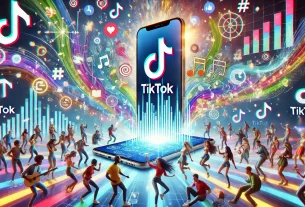Trump’s Draft Executive Order: Integrating AI in Public Schools
Introduction: A Bold Move Toward Digital Transformation
In a controversial but forward-thinking policy initiative, former President Donald Trump is reportedly drafting an executive order aimed at integrating artificial intelligence (AI) into the American public school system. This proposed directive—currently in internal review—targets the development and deployment of AI-driven educational tools across elementary and secondary schools. As the U.S. races to keep up with global innovations in education technology, this proposal could redefine the roadmap for 21st-century learning.
What Is the Executive Order About?
According to sources close to the matter, the executive order emphasizes the incorporation of AI to enhance both administrative performance and classroom instruction across public schools. The objective is to modernize the educational experience and provide students nationwide with access to **cutting-edge, personalized learning technologies**.
Key goals of the executive order include:
- Improving adaptive learning capabilities to tailor education to individual student needs
- Training teachers to utilize AI-powered platforms and analytics tools
- Using AI to close achievement gaps and support students in underserved regions
- Creating ethical guidelines around the use of AI in education
Why Now? Timing and Motivation Behind the Policy
This initiative emerges amid growing global interest in AI’s transformative potential. With countries like China already piloting AI in schools and Europe investing heavily in education tech, the U.S. faces both a competitive and ideological drive to modernize its education system.
Motivations behind the executive order:
- Global competition: Maintain U.S. leadership in cutting-edge educational innovations
- Workforce readiness: Equip students with digital skills vital for future job markets
- Efficiency in education: Utilize data and automation to optimize resource allocation
Benefits of AI Integration in Public Education
The proposed executive order reflects an understanding of the manifold benefits AI can provide when appropriately deployed in the educational sector. These include:
Personalized Learning at Scale
AI can be used to customize lesson plans in real time according to each student’s strengths and weaknesses. This allows schools to adopt a more individualized approach to instruction—something that traditional learning systems struggle to achieve at scale.
Automated Administrative Tasks
From grading assignments to monitoring attendance, AI can drastically reduce the administrative workload on teachers and staff. This frees up educators to spend more time focusing on student engagement and innovation in curriculum delivery.
Real-Time Performance Metrics
Educators will have access to data dashboards powered by AI, offering a comprehensive view of student progress. These tools can alert teachers when students fall behind and help in adjusting teaching strategies for better outcomes.
Challenges and Concerns
Despite its potential, the executive order also raises some critical issues. Many education experts and civil rights organizations are voicing concerns about the implications of deploying AI in schools without clear constraints.
Privacy and Student Data
One of the most immediate concerns is the collection and storage of student data. Critics worry that without stringent data protection laws, students’ personal information could be misused or leaked.
Bias in AI Algorithms
AI is only as unbiased as the data it’s trained on. There’s a risk that discriminatory patterns could be inadvertently reinforced, particularly affecting minority and disabled students.
Digital Divide
AI-powered learning tools assume access to high-speed internet and digital devices—resources that are still lacking in many underserved communities. This could further exacerbate educational inequities if not implemented carefully.
Teacher-Student Interaction
Replacing too much human interaction with AI-assisted learning could have social and emotional ramifications. Human mentorship and peer interaction remain crucial components of holistic education.
What Educators and Parents Can Expect
If enacted, the executive order could result in sweeping changes over the next several years. Here’s what stakeholders might expect:
For Educators:
- Reskilling programs to help teachers integrate AI tools into their workflow
- More automation support to handle administrative tasks
- Guidance on using ethical AI through federally endorsed training modules
For Parents and Students:
- Access to AI-driven platforms for homework help and tutoring
- Targeted interventions for students struggling academically
- New privacy protocols to keep families informed and protected
The Bigger Picture: A National AI Education Strategy
Beyond its educational objectives, the executive order could form a core part of a broader national AI strategy. By embedding AI into the fabric of early education, the country prepares its citizens from a young age to live and work in a digitally sophisticated world driven by intelligent systems.
This effort aligns with broader goals such as:
- Building AI literacy: Introduce students to programming, machine learning, and ethical AI early on
- Stimulating domestic innovation: Create a pipeline of future talent for tech industries
- National security strength: Counter foreign technological advantages with home-grown AI expertise
Conclusion: A Pivotal Moment for U.S. Education Policy
Trump’s draft executive order represents a pivotal fork in the road for American education. While the proposal is met with both optimism and scrutiny, its core message is clear: the future of education is digital—and AI will be a cornerstone of that transformation.
If implemented correctly—with ethical frameworks, inclusivity, and proper oversight—this integration of AI into public schools could position the U.S. as a global leader in educational innovation.
Stay updated: As this executive order moves through governmental channels, educators, parents, and policymakers must stay engaged in shaping how these tools are implemented responsibly and equitably.
Final Thoughts
Technology is not a silver bullet, but it can be a powerful tool for progress. As we contemplate a future where AI helps mold young minds, we must be vigilant to ensure that these tools empower rather than hinder, unify rather than divide.
Keep an eye on developments around this executive order—it might just redefine the American classroom for generations to come.

